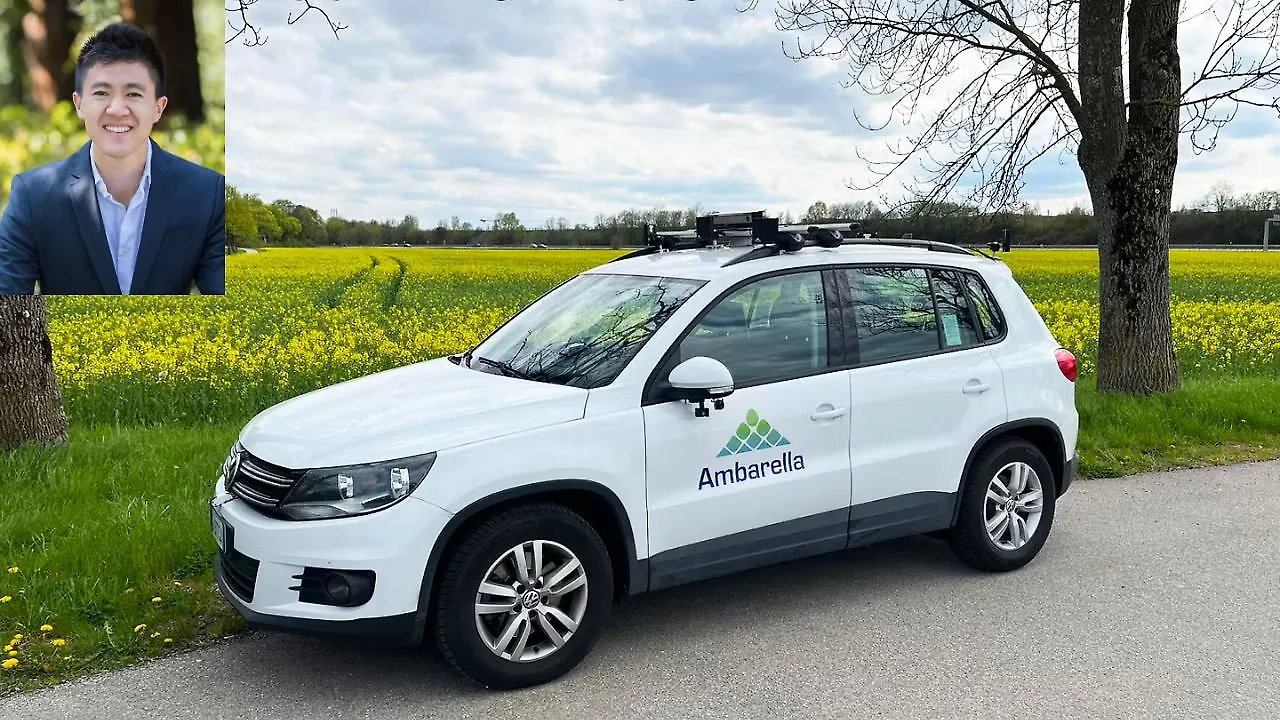
For Ambarella, the California-based fabless semiconductor design company, the growth in 4D imaging radar technology is welcome news for its Oculii radar.
The company also focuses on low-power, high-definition and ultra-HD video compression, image processing and computer vision processors. It offers innovative solutions for centralising radar processing on its CV3-AD SoCs. This is done using Oculii radar technology along with investments in low-level sensor fusion and transformer-based Artificial Intelligence (AI) networks.
Steven Hong, VP & GM of Radar Technology, Ambarella, told Mobility Outlook that all this translates into tremendous potential for both the 4D imaging radar market and adjacent domain controller/sensor fusion applications.
Ambarella’s Oculii radar technology uses AI to enable greater angular resolution performance, LIDAR-like point cloud density, and longer-range radar sensing. It is done using AI to dynamically adapt the radar waves to the environment while reducing the antenna count and data size through sparsification.
This radar sensing technology enables it to change the current architectural paradigm, which places a radar processor in each imaging radar module. “Our technology allows these expensive compute elements to be removed from the satellite (or edge) radar heads which greatly reduces costs,” explained Hong.
Superior Imaging
Ambarella streams the data to a centralised SoC from its CV3-AD 5nm AI domain controller family. The CV3-AD, with its on-chip radar signal processing acceleration, can leverage the Oculii AI radar technology to “create a superior imaging radar system.”
The future of the automotive industry looks increasingly interconnected with the capabilities of 4D imaging radar. Given that automotive imaging radar is critical for vehicles to offer ADAS or autonomous functions (since radar performance is consistent in rain, snow and fog), Ambarella is investing in transformer-based AI networks, using low-level fusion.

“We also invest in our own R&D autonomous vehicles, wherein we deploy sensors using our technology and even build proof-of-concept sensors in some cases. This is because we want to interconnect the real-world data from these specific sensors at a very low level,” continued Hong.
With automakers assuming greater responsibility in choosing sensor suites, Ambarella expects this to intensify over the next decade. This will then be in sync with “how we currently approach the sensor suites on our R&D autonomous vehicles (AVs)”.
Greater Safety
These low-level fusion systems can provide a new and higher level of safety in AVs. Consequently, 4D imaging radar will become an “important sensing modality as the move toward autonomy progresses.”
Ambarella, according to Hong, adopts a unique ‘algorithm-first’ approach to designing its SoCs and software. It tailors its hardware to optimally run AI algorithms for the markets and applications the company will serve.
Taking this approach leads to “a deep understanding of the optimal solutions” in solving the challenges of the automotive systems where its chips and software are deployed. The company also works with OEMs and Tier-1 companies to jointly meet these challenges and endeavour to create a safer world.
The company invests in centralised radar processing which enables significantly higher-performance imaging radar systems by combining Oculii AI radar technology and its CV3-AD AI domain control SoC family.
Combining these elements with its camera and AI processing performance yields a complete solution for the end customers who can then address all aspects of autonomous mobility, from the L2+ to L4 market segments.
Competitive Advantages
According to Hong, the company’s technology enables OEMs take control of their sensing suites within the software-defined vehicle. At present, most radars are not updated with new signal processing enhancements due to distributed (or edge) processing. Often, the processors in five separate radar modules need to be individually updated.
By centralising the radar compute, only a single SoC needs to be updated, significantly simplifying the process. With this single update, the combined software for all parts of the AD stack can be upgraded, including radar, camera and Lidar processing etc. This will allow an OEM to rapidly deploy new software enhancements to create customised vehicle experiences for drivers.
Ambarella’s central radar and camera processing technology allows the sensing system to be further customised through software for specific use cases and real-time environmental conditions. With distributed/edge processing, the radar module needs to be provisioned with a compute that can handle the worst-case scenario.
Centralised processing enables the entire sensing suite to be dynamically and optimally customised for each specific scenario. For instance, when it is raining, optical sensor performance is affected. With a centralised architecture, rather than allocating the same compute to optical sensors that are used in dry conditions, more compute can be dynamically allocated for radar processing as it is unaffected by rain.
Also Read: